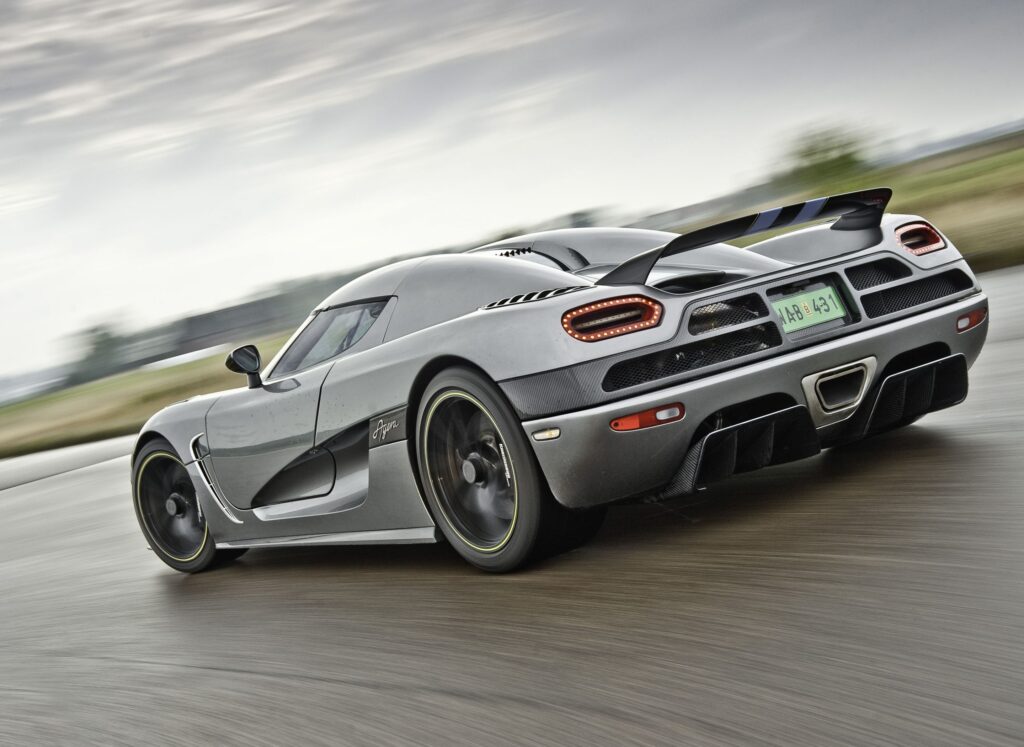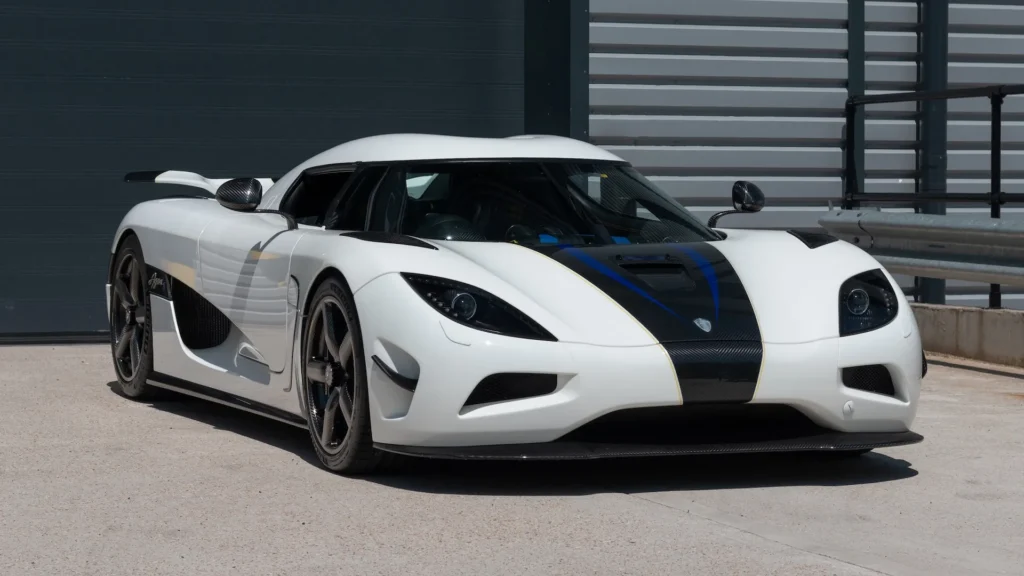Few names in the hyper car arena are as popular as Koenigsegg’s. In 2010, it was the model Koenigsegg Agera, and it was high time not to further engrave its already full reputation but to redefine the limits of performance and engineering by auto cars. This epitomizes innovation, speed, and design, and the model quickly became a symbol for cutting-edge technology in the hypercar sector.
Design and Aerodynamics
From a design perspective, the Koenigsegg Agera is a masterpiece in the perfect integration of functionality and aesthetics. Its body is all lightweight carbon fiber, giving the necessary stiffness in attaining high-speed performance while it is very light. The sleek, aerodynamic shape fitted with a ton of engineering details to minimize drag coefficient while maximizing downforce, enabling the car to cut through the air with minimal resistance.
Another signature feature of Koenigsegg Agera was the dihedral doors that provided an extremely dramatic entrance but, to be honest, contributed generally to car aerodynamics. The front had a splitter strongly alimenting aggressive air intakes so as to enhance the cooling of its powerful engine. Its large adjustable rear spoiler maximized downforce adjustments according to the required driving needs of the driver in high-speed situations as well.

Exterior and interior
The Koenigsegg Agera body is composed of lightweight reinforcements and impregnated carbon fiber/kevlar. The hardtop roof of the vehicle can be stored beneath the front hood lid. For the best weight distribution and safety, the chassis is also composed of carbon fiber and includes an integrated fuel tank system with an aluminum honeycomb construction. Depending on the driving situation, the electrically adjustable rear wing can be adjusted manually or with an auto setting to minimize the trade-off between downforce and low drag. The Agera is equipped with 19-inch front and 20-inch rear forged aluminum wheels with center locking nuts. The wheels are shod with Michelin Super Sport tires, which have a maximum speed of 420 km/h (260 mph).
Engine And Transmission
The vehicle was originally equipped with a 4.7-liter V8 engine with fixed-vane twin-turbochargers. However, the engine was later swapped out for an internally developed 5.0-liter V8 engine with twin-turbochargers, which produces 1,100 N⋅m (811 lbf⋅ft) of torque at 4,000 rpm and a maximum power output of 706 kW (960 PS; 947 hp) at 6,900 rpm and 1,100 N⋅m (960 lbf⋅ft) of power at 4,000 rpm.
Because of the aluminium construction and carbon fibre inlet manifold, the engine weighs only 197 kg (434 lb) in total. A specifically designed CIMA 7-speed dual-clutch transmission with paddle shifters powers the machine.[10] It is the first single-input shaft dual-clutch transmission. Faster shift times are achieved by the second clutch, which slows down the input shaft during upshifts to shorten the time needed to synchronize the next gear. The transmission weights just 81 kg (179 lb), which is most notable.

Powertrain and Performance
It was primarily due to an unbelievable 4.7-liter twin-turbocharged V8 engine that could give no less than 1,140 horsepower and 1,200 Nm of torque. This monstrous force would propel the Agera from 0 to 100 km/h (0 to 62 mph) in a meager time of 2.9 seconds and over the top 260 mph. Such performance figures placed the Agera in the list of the fastest production cars ever built.
To which the engine was mated, a seven-speed dual-clutch transmission that shifted through its gears at breakneck speeds to add even more driving pleasure to this glorious beast. Its gigantic power combined with an element of lightweight meant an almost impeccable power-to-weight ratio; though it excels in parades of straight-line speed, the car is also very competitive on both winding roads and twisting racetracks.
Evolution of Technologies:
In fact, the Agera R is the prototype of all technological innovations by Koenigsegg. This advanced aerodynamics system features a variety of parts that change according to speed and road conditions. This car was released with the very unusual “Koenigsegg Direct Drive” transmission system; actually, it didn’t require a conventional gearbox for its modern style with direct power transfer to the wheels.
Other features included the state-of-the-art infotainment system coupled with a customizable digital display of all important information the driver would need. Detail was carried forward into issues of safety, the carbon fiber monocoque chassis designed for optimum protection should the occupants of this car happen to go through an accident.

Legacy and Impact
Just a few Koenigsegg Agera were produced, thus making the car a precious pearl for auto enthusiasts and collectors. Much impressive of the car will be in the hypercar segment. Even the models inspired from Koenigsegg Agera have inspired other manufacturers to take better shots in their effort at performance and technology. Indeed, the limited editions consist of the Agera R and Agera RS, it really took it to a whole new level of the record-breaking breakneck speed and capabilities. Agera series put Koenigsegg Agera firmly into this new breed of hyper cars, indicating it was perfectly possible for exceptional engineering to sit alongside some panache in design.
About Koenigsegg Agera
On October 1, 2017, the Agera RS broke the record for 0–400–0 km/h (0–249–0 mph) in 36.44 seconds, beating the Bugatti Chiron’s time by 5.56 seconds. At an abandoned Danish airbase near Vandel, Denmark, the record was set. Niklas Lilja, a test driver for Koenigsegg Agera, was operating the vehicle.
According to Koenigsegg Agera, during the record run, the vehicle covered 1,958 meters of acceleration from 0 to 400 km/h in 26.88 seconds and 483 meters of deceleration in 9.56 seconds. 2,441 meters was the total distance used to set the record. In addition, Koenigsegg smashed their previous 0–400–0 km/h record by 2.57 seconds on November 4, 2017, during the speed record run.
Conclusion
The Koenigsegg Agera reflects a very important stage in the development of the supercar. The Agera can be described as simply sweeping in design, laced with the latest in technology, and blistering with performance. Once one of the most highly respected hyper cars of its time, the Agera remains feted for enthusiasts and collectors today. It embodies a spirit that is continually forward-looking and optimal to define Koenigsegg Agera in itself. It continues to this day, finally cementing its name in the history books of the automobile as the true legend of performance engineering.
Pingback: Top 9 Most Luxury Koenigsegg CCX - CARS CRAFTERS
Pingback: Top 8 Most Famous Koenigsegg Agera R - CARS CRAFTERS